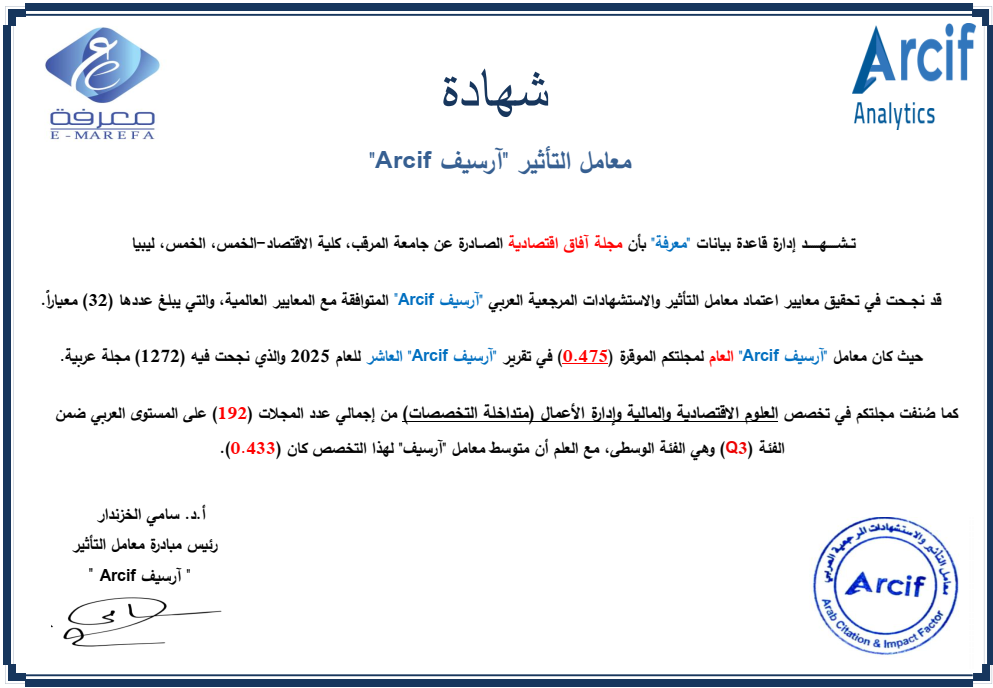the determinants of demand for fish meat
DOI:
https://doi.org/10.65137/jaq.v9i17.7Abstract
his study was conducted and aimed to analyze the factors that affect the consumption of fish meat in Derna city, through the standard estimation of the demand function. Where data were collected from secondary and primary sources, and to obtain the primary data, cross-sectional data from the community of households consuming fish meat was used. The data was collected by the questionnaire prepared for the study by interviewing consumers in markets and fish meat centers. The study relied on the descriptive statistical method and quantitative analysis using the SPSS statistical package. The standard estimation of the demand function (the amount of fish meat consumed) was made in the partial form for three income categories, the standard estimation of the aggregate function (for all members of the study sample) was also made. The multiple regression method was used, using the Ordinary Least Squares (OLS) method in the linear and logarithmic paired forms. In addition to conducting variance analysis to find out the differences between the three income categories. The study reached to a set of results, the most important, that the variables (elements) educational level, monthly income, commodity price, alternative commodity price, family size have an impact on the demand for fish meat in the study area (the city of Derna). And the results of the statistical analysis showed that the price elasticity demand for sample (overall families), reached to (-2.634), which is negative and greater than one (elastic). This means that an increase in the price of fish by (10%) leads to a decrease in the quantity demanded of it by about (26.34%) when other factors remain constant. The income demand elasticity has reached about (0.299), which is positive and less than one (normal good), meaning that an increase in the income of the family consuming fish by (10%) leads to an increase in the quantity demanded of it by (2.99%) when other factors remain constant. As for the elasticity of demand for the alternative commodity (the cross elasticity) it reached about (0.458), which is positive and less than one, meaning that the increase in the price of the poultry commodity by (10%) leads to an increase in the required quantity of fish by (4.58%) when other factors remain constant.
Downloads
Published
2023-01-01
How to Cite
Bolazeem, H. A. K., Al-Hasadi, I. Q., Masoud, M. O., & Al-Mabrouk, R. B. M. (2023). the determinants of demand for fish meat . Afaqeqtisadia Journal , 9(17), 66–44. https://doi.org/10.65137/jaq.v9i17.7
Issue
Section
Arabic Articles
License
Copyright (c) 2023 Afaqeqtisadia Journal

This work is licensed under a Creative Commons Attribution-NonCommercial-NoDerivatives 4.0 International License.







